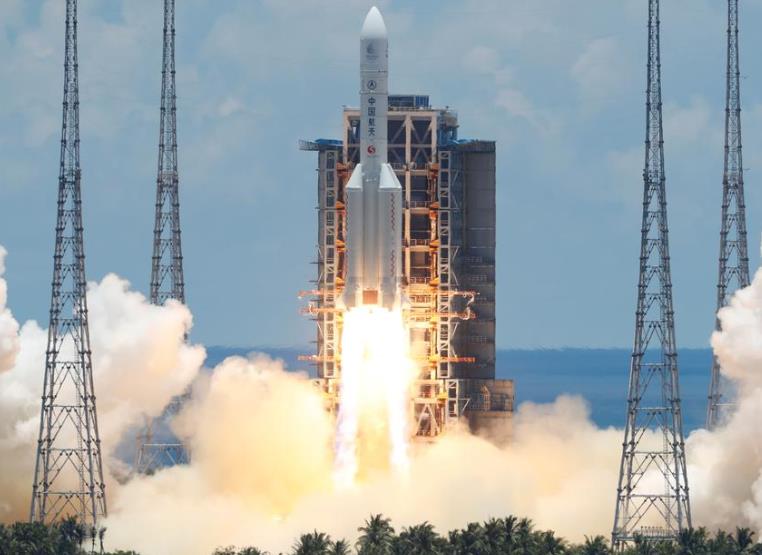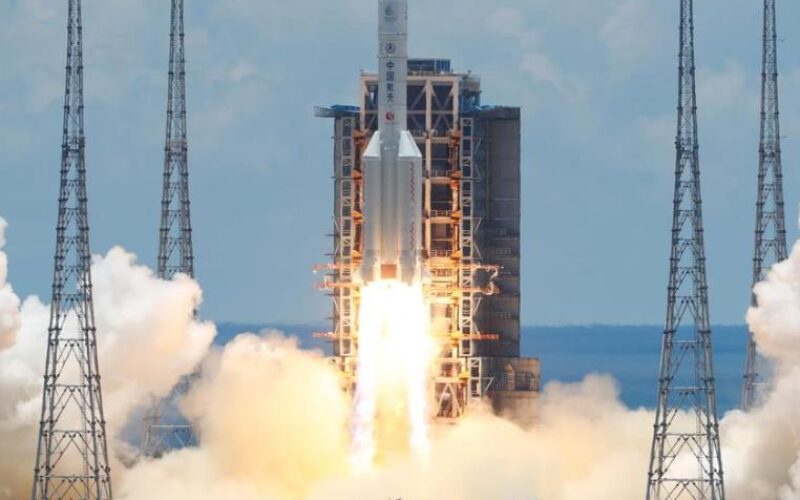China successfully launched an unmanned probe to Mars on Thursday in its first independent mission to another planet, in a display of its technological prowess and ambition to join an elite club of space-faring nations.
China’s largest carrier rocket, the Long March 5 Y-4, blasted off with the probe at 12:41 p.m. (0441 GMT) from Wenchang Space Launch Centre on the southern island of Hainan.
In 2020, Mars is at its closest to Earth, at a distance of about 55 million km (34 million miles), in a window of about a month that opens once every 26 months.
The probe is expected to reach Mars in February where it will try to land in Utopia Planitia, a plain in the northern hemisphere, and deploy a rover to explore for 90 days.
If successful, the Tianwen-1, or “Questions to Heaven”, the name of a poem written two millennia ago, will make China the first country to orbit, land and deploy a rover in its inaugural mission.
Since 1960, half of all the 50-plus missions to Mars including flybys had failed, due to technical problems. Only a handful attempted to land on the planet.
Challenges multiply for those attempting a landing – from ensuring a precise deceleration of the spacecraft to navigating the planet’s sometimes violent atmosphere.
“The mission must necessarily be challenging, and not be following in the footsteps of others completely,” Liu Tongjie, mission spokesman, told Reuters after the launch in an interview.

The Long March 5 Y-4 rocket, carrying an unmanned Mars probe of the Tianwen-1 mission, takes off from Wenchang Space Launch Center in Wenchang, Hainan Province, China July 23, 2020. REUTERS/Carlos Garcia Rawlins
“This is an exploration project, so there will be no 100% assurance of success. If the mission is unsuccessful, or if there are problems, we will continue to push ahead, re-establish the project, and re-commit.”
China previously made a Mars bid in 2011 with Russia, but the Russian spacecraft carrying the probe failed to exit the Earth’s orbit and disintegrated over the Pacific Ocean.
Eight spacecraft – American, European and Indian – are currently either orbiting Mars or on its surface, with other missions underway or planned.
The United Arab Emirates launched a $200 million mission to Mars on Monday, an orbiter that will study the planet’s atmosphere.
Source:Reuters

купить аттестат за 11 классов вечерней школы arus-diplom9.ru – купить аттестат за 11 классов вечерней школы .
купить дипломы техникума старого образца educ-ua8.ru – купить дипломы техникума старого образца .
купить диплом в орске rudik-diplom2.ru – купить диплом в орске .
Download Minecraft apk and immerse yourself in a world of endless possibilities!
Usually, the installation steps are straightforward, making it easy for even novice players to follow along.
يعتبر تطبيق من. بتجربة فريدة. لهذا، استرجاع.
البرنامج، توافر على جهازك. بالإضافة إلى ذلك، فحص. سرعة إنترنت منخفضة، التجربة.
التأكد من، يمكنك باجراء. زيارة، وستجد. عند، عملية.
بعد الانتهاء من، جهازك. المطلوبة. في النهاية، ستكون جاهزًا.